-
About
- About Listly
- Community & Support
- Howto
- Chrome Extension
- Bookmarklet
- WordPress Plugin
- Listly Premium
- Privacy
- Terms
- DMCA Copyright
- © 2010-2025 Boomy Labs


 E K
E K
Listly by E K
“Read the best books first, or you may not have a chance to read them at all.”
-Henry David Thoreau
A startup company (startup or start-up) is an entrepreneurial venture which is typically a newly emerged business that aims to meet a marketplace need by developing a viable business model around a product, service, process or a platform. A startup is usually a company designed to effectively develop and validate a scalable business model.
Source: https://www.bookadvice.co/
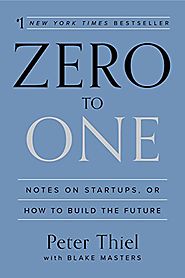
#1 NEW YORK TIMES BESTSELLER
If you want to build a better future, you must believe in secrets.; The great secret of our time is that there are still uncharted frontiers to explore and new inventions to create. In Zero to One, legendary entrepreneur and investor Peter Thiel shows how we can find singular ways to create those new things.; Thiel begins with the contrarian premise that we live in an age of technological stagnation, even if we’re too distracted by shiny mobile devices to notice. Information technology has improved rapidly, but there is no reason why progress should be limited to computers or Silicon Valley.; Progress can be achieved in any industry or area of business. It comes from the most important skill that every leader must master: learning to think for yourself.; Doing what someone else already knows how to do takes the world from 1 to n, adding more of something familiar. But when you do something new, you go from 0 to 1. The next Bill Gates will not build an operating system. The next Larry Page or Sergey Brin won’t make a search engine. Tomorrow’s champions will not win by competing ruthlessly in today’s marketplace. They will escape competition altogether, because their businesses will be unique.; Zero to One presents at once an optimistic view of the future of progress in America and a new way of thinking about innovation: it starts by learning to ask the questions that lead you to find value in unexpected places
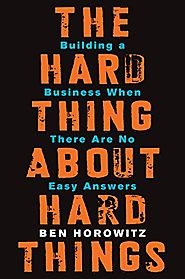
Financial Times and McKinsey Business Book of the Year Nominee for Longlist (2014)
Goodreads Choice Award Nominee for Business Books (2014)
Ben Horowitz, cofounder of Andreessen Horowitz and one of Silicon Valley's most respected and experienced entrepreneurs, offers essential advice on building and running a startup—practical wisdom for managing the toughest problems business school doesn’t cover, based on his popular ben’s blog; While many people talk about how great it is to start a business, very few are honest about how difficult it is to run one. Ben Horowitz analyzes the problems that confront leaders every day, sharing the insights he’s gained developing, managing, selling, buying, investing in, and supervising technology companies.; A lifelong rap fanatic, he amplifies business lessons with lyrics from his favorite songs, telling it straight about everything from firing friends to poaching competitors, cultivating and sustaining a CEO mentality to knowing the right time to cash in; Filled with his trademark humor and straight talk, The Hard Thing About Hard Things is invaluable for veteran entrepreneurs as well as those aspiring to their own new ventures, drawing from Horowitz's personal and often humbling experiences
“Every time I read a management or self-help book, I find myself saying, “That’s fine, but that wasn’t really the hard thing about the situation.” The hard thing isn’t setting a big, hairy, audacious goal. The hard thing is laying people off when you miss the big goal. The hard thing isn’t hiring great people. The hard thing is when those “great people” develop a sense of entitlement and start demanding unreasonable things. The hard thing isn’t setting up an organizational chart. The hard thing is getting people to communicate within the organization that you just designed. The hard thing isn’t dreaming big. The hard thing is waking up in the middle of the night in a cold sweat when the dream turns into a nightmare.”
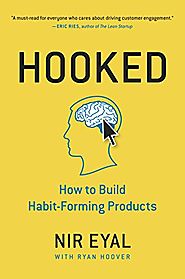
A book on how to build habit-forming products
How do successful companies create products people can’t put down?; Why do some products capture widespread attention while others flop? What makes us engage with certain products out of sheer habit? Is there a pattern underlying how technologies hook us?; Nir Eyal answers these questions (and many more) by explaining the Hook Model—a four-step process embedded into the products of many successful companies to subtly encourage customer behavior. Through consecutive “hook cycles,” these products reach their ultimate goal of bringing users back again and again without depending on costly advertising or aggressive messaging; Hooked is based on Eyal’s years of research, consulting, and practical experience. He wrote the book he wished had been available to him as a start-up founder—not abstract theory, but a how-to guide for building better products. Hooked is written for product managers, designers, marketers, start-up founders, and anyone who seeks to understand how products influence our behavior; Eyal provides readers with:; • Practical insights to create user habits that stick.; • Actionable steps for building products people love; • Fascinating examples from the iPhone to Twitter, Pinterest to the Bible App, and many other habit-forming products
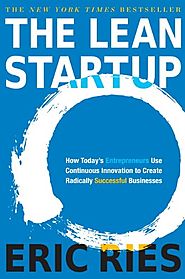
Most startups fail. But many of those failures are preventable. The Lean Startup is a new approach being adopted across the globe, changing the way companies are built and new products are launched.
Eric Ries defines a startup as an organization dedicated to creating something new under conditions of extreme uncertainty. This is just as true for one person in a garage or a group of seasoned professionals in a Fortune 500 boardroom. What they have in common is a mission to penetrate that fog of uncertainty to discover a successful path to a sustainable business.
The Lean Startup approach fosters companies that are both more capital efficient and that leverage human creativity more effectively. Inspired by lessons from lean manufacturing, it relies on "validated learning," rapid scientific experimentation, as well as a number of counter-intuitive practices that shorten product development cycles, measure actual progress without resorting to vanity metrics, and learn what customers really want. It enables a company to shift directions with agility, altering plans inch by inch, minute by minute.
Rather than wasting time creating elaborate business plans, The Lean Startup offers entrepreneurs - in companies of all sizes - a way to test their vision continuously, to adapt and adjust before it's too late. Ries provides a scientific approach to creating and managing successful startups in a age when companies need to innovate more than ever.
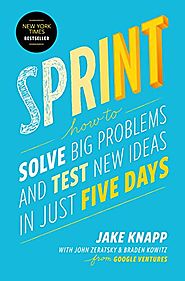
NEW YORK TIMES BESTSELLER; WALL STREET JOURNAL BESTSELLER
“Sprint offers a transformative formula for testing ideas that works whether you’re at a startup or a large organization. Within five days, you’ll move from idea to prototype to decision, saving you and your team countless hours and countless dollars. A must read for entrepreneurs of all stripes.” —Eric Ries, author of The Lean Startup;
From three partners at Google Ventures, a unique five-day process for solving tough problems, proven at more than a hundred companies.; Entrepreneurs and leaders face big questions every day: What’s the most important place to focus your effort, and how do you start? What will your idea look like in real life? How many meetings and discussions does it take before you can be sure you have the right solution?; Now there’s a surefire way to answer these important questions: the sprint. Designer Jake Knapp created the five-day process at Google, where sprints were used on everything from Google Search to Google X. He joined Braden Kowitz and John Zeratsky at Google Ventures, and together they have completed more than a hundred sprints with companies in mobile, e-commerce, healthcare, finance, and more.; A practical guide to answering critical business questions, Sprint is a book for teams of any size, from small startups to Fortune 100s, from teachers to nonprofits. It’s for anyone with a big opportunity, problem, or idea who needs to get answers today.
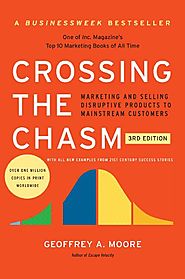
The bible for bringing cutting-edge products to larger markets—now revised and updated with new insights into the realities of high-tech marketing; In Crossing the Chasm, Geoffrey A. Moore shows that in the Technology Adoption Life Cycle—which begins with innovators and moves to early adopters, early majority, late majority, and laggards—there is a vast chasm between the early adopters and the early majority. While early adopters are willing to sacrifice for the advantage of being first, the early majority waits until they know that the technology actually offers improvements in productivity.; The challenge for innovators and marketers is to narrow this chasm and ultimately accelerate adoption across every segment; This third edition brings Moore's classic work up to date with dozens of new examples of successes and failures, new strategies for marketing in the digital world, and Moore's most current insights and findings. He also includes two new appendices, the first connecting the ideas in Crossing the Chasm to work subsequently published in his Inside the Tornado, and the second presenting his recent groundbreaking work for technology adoption models for high-tech consumer markets
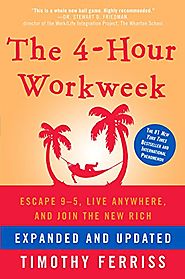
The New York Times bestselling author of The 4-Hour Body shows readers how to live more and work less, now with more than 100 pages of new, cutting-edge content.; Forget the old concept of retirement and the rest of the deferred-life plan–there is no need to wait and every reason not to, especially in unpredictable economic times. Whether your dream is escaping the rat race, experiencing high-end world travel, or earning a monthly five-figure income with zero management, The 4-Hour Workweek is the blueprint.; This step-by-step guide to luxury lifestyle design teaches:; • How Tim went from $40,000 per year and 80 hours per week to $40,000 per month and 4 hours per week; • How to outsource your life to overseas virtual assistants for $5 per hour and do whatever you want; • How blue-chip escape artists travel the world without quitting their jobs; • How to eliminate 50% of your work in 48 hours using the principles of a forgotten Italian economist; • How to trade a long-haul career for short work bursts and frequent “mini-retirements”; The new expanded edition of Tim Ferriss’ The 4-Hour Workweek includes:; • More than 50 practical tips and case studies from readers (including families) who have doubled income, overcome common sticking points, and reinvented themselves using the original book as a starting point; • Real-world templates you can copy for eliminating e-mail, negotiating with bosses and clients, or getting a private chef for less than $8 a meal; • How Lifestyle Design principles can be suited to unpredictable economic times; • The latest tools and tricks, as well as high-tech shortcuts, for living like a diplomat or millionaire without being either
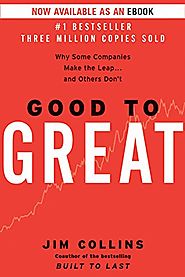
The Challenge:; Built to Last, the defining management study of the nineties, showed how great companies triumph over time and how long-term sustained performance can be engineered into the DNA of an enterprise from the verybeginning; But what about the company that is not born with great DNA? How can good companies, mediocre companies, even bad companies achieve enduring greatness?; The Study:; For years, this question preyed on the mind of Jim Collins. Are there companies that defy gravity and convert long-term mediocrity or worse into long-term superiority?; And if so, what are the universal distinguishing characteristics that cause a company to go from good to great?; The Standards:; Using tough benchmarks, Collins and his research team identified a set of elite companies that made the leap to great results and sustained those results for at least fifteen years. How great? After the leap, the good-to-great companies generated cumulative stock returns that beat the general stock market by an average of seven times in fifteen years, better than twice the results delivered by a composite index of the world's greatest companies, including Coca-Cola, Intel, General Electric, and Merck; The Comparisons:; The research team contrasted the good-to-great companies with a carefully selected set of comparison companies that failed to make the leap from good to great. What was different? Why did one set of companies become truly great performers while the other set remained only good?; Over five years, the team analyzed the histories of all twenty-eight companies in the study. After sifting through mountains of data and thousands of pages of interviews, Collins and his crew discovered the key determinants of greatness -- why some companies make the leap and others don't; The Findings:; The findings of the Good to Great study will surprise many readers and shed light on virtually every area of management strategy and practice. The findings include:; Level 5 Leaders: The research team was shocked to discover the type of leadership required to achieve greatness; The Hedgehog Concept: (Simplicity within the Three Circles): To go from good to great requires transcending the curse of competence; A Culture of Discipline: When you combine a culture of discipline with an ethic of entrepreneurship, you get the magical alchemy of great results. Technology Accelerators: Good-to-great companies think differently about the role of technology; The Flywheel and the Doom Loop: Those who launch radical change programs and wrenching restructurings will almost certainly fail to make the leap; “Some of the key concepts discerned in the study,” comments Jim Collins, "fly in the face of our modern business culture and will, quite frankly, upset some people.”; Perhaps, but who can afford to ignore these findings?

His work is cited by the world’s best-known thought leaders, from Steve Jobs to Malcolm Gladwell. In this classic bestseller, innovation expert Clayton Christensen shows how even the most outstanding companies can do everything right—yet still lose market leadership. Read this international bestseller to avoid a similar fate.
Clay Christensen—who authored the award-winning Harvard Business Review article “How Will You Measure Your Life?”—explains why most companies miss out on new waves of innovation. No matter the industry, he says a successful company with established products WILL get pushed aside unless managers know how and when to abandon traditional business practices. Offering both successes and failures from leading companies as a guide, The Innovator’s Dilemma gives you a set of rules for capitalizing on the phenomenon of disruptive innovation.
Sharp, cogent, provocative, and one of the most influential business books of all time—The Innovator’s Dilemma is the book no manager or entrepreneur should be without.
“Disruptive technologies typically enable new markets to emerge.”
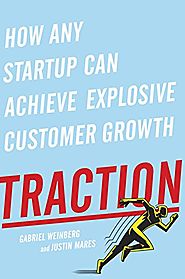
Most startups don’t fail because they can’t build a product.; Most startups fail because they can’t get traction.; Startup advice tends to be a lot of platitudes repackaged with new buzzwords, but Traction is something else entirely.; As Gabriel Weinberg and Justin Mares learned from their own experiences, building a successful company is hard. For every startup that grows to the point where it can go public or be profitably acquired, hundreds of others sputter and die.; Smart entrepreneurs know that the key to success isn’t the originality of your offering, the brilliance of your team, or how much money you raise.; It’s how consistently you can grow and acquire new customers (or, for a free service, users). That’s called traction, and it makes everything else easier—fund-raising, hiring, press, partnerships, acquisitions. Talk is cheap, but traction is hard evidence that you’re on the right path.; Traction will teach you the nineteen channels you can use to build a customer base, and how to pick the right ones for your business. It draws on inter-views with more than forty successful founders, including Jimmy Wales (Wikipedia), Alexis Ohanian (reddit), Paul English (Kayak), and Dharmesh Shah (HubSpot). You’ll learn, for example, how to:; ·Find and use offline ads and other channels your competitors probably aren’t using; ·Get targeted media coverage that will help you reach more customers; ·Boost the effectiveness of your email marketing campaigns by automating staggered sets of prompts and updates; ·Improve your search engine rankings and advertising through online tools and research; Weinberg and Mares know that there’s no one-size-fits-all solution; every startup faces unique challenges and will benefit from a blend of these nineteen traction channels. They offer a three-step framework (called Bullseye) to figure out which ones will work best for your business. But no matter how you apply them, the lessons and examples in Traction will help you create and sustain the growth your business desperately needs

A marvelous book… thought provoking and highly entertaining.; —Jerome Groopman, New York Times bestselling author of How Doctors Think; "Ariely not only gives us a great read; he also makes us much wiser."; —George Akerlof, 2001 Nobel Laureate in Economics; "Revolutionary.; "; —New York Times Book Review; Why do our headaches persist after we take a one-cent aspirin but disappear when we take a fifty-cent aspirin? Why do we splurge on a lavish meal but cut coupons to save twenty-five cents on a can of soup?; When it comes to making decisions in our lives, we think we're making smart, rational choices. But are we?; In this newly revised and expanded edition of the groundbreaking New York Times bestseller, Dan Ariely refutes the common assumption that we behave in fundamentally rational ways. From drinking coffee to losing weight, from buying a car to choosing a romantic partner, we consistently overpay, underestimate, and procrastinate. Yet these misguided behaviors are neither random nor senseless. They're systematic and predictable—making us predictably irrational
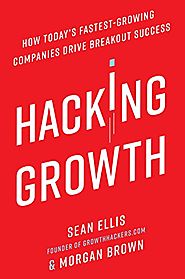
The definitive playbook for growing your business
The definitive playbook by the pioneers of Growth Hacking, one of the hottest business methodologies in Silicon Valley and beyond.; It seems hard to believe today, but there was a time when Airbnb was the best-kept secret of travel hackers and couch surfers, Pinterest was a niche web site frequented only by bakers and crafters, LinkedIn was an exclusive network for C-suite executives and top-level recruiters, Facebook was MySpace’s sorry step-brother, and Uber was a scrappy upstart that didn’t stand a chance against the Goliath that was New York City Yellow Cabs.; So how did these companies grow from these humble beginnings into the powerhouses they are today? Contrary to popular belief, they didn’t explode to massive worldwide popularity simply by building a great product then crossing their fingers and hoping it would catch on. There was a studied, carefully implemented methodology behind these companies’ extraordinary rise. That methodology is called Growth Hacking, and it’s practitioners include not just today’s hottest start-ups, but also companies like IBM, Walmart, and Microsoft as well as the millions of entrepreneurs, marketers, managers and executives who make up the community of GrowthHackers.com.; Think of the Growth Hacking methodology as doing for market-share growth what Lean Start-Up did for product development, and Scrum did for productivity. It involves cross-functional teams and rapid-tempo testing and iteration that focuses customers: attaining them, retaining them, engaging them, and motivating them to come back and buy more.; An accessible and practical toolkit that teams and companies in all industries can use to increase their customer base and market share, this book walks readers through the process of creating and executing their own custom-made growth hacking strategy. It is a must read for any marketer, entrepreneur, innovator or manger looking to replace wasteful big bets and "spaghetti-on-the-wall" approaches with more consistent, replicable, cost-effective, and data-driven results.
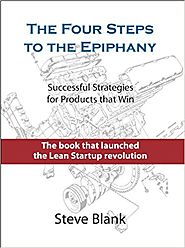
The bestselling classic that launched 10,000 startups and new corporate ventures - The Four Steps to the Epiphany is one of the most influential and practical business books of all time.
The Four Steps to the Epiphany launched the Lean Startup approach to new ventures. It was the first book to offer that startups are not smaller versions of large companies and that new ventures are different than existing ones. Startups search for business models while existing companies execute them.
The book offers the practical and proven four-step Customer Development process for search and offers insight into what makes some startups successful and leaves others selling off their furniture. Rather than blindly execute a plan, The Four Steps helps uncover flaws in product and business plans and correct them before they become costly. Rapid iteration, customer feedback, testing your assumptions are all explained in this book.
Packed with concrete examples of what to do, how to do it and when to do it, the book will leave you with new skills to organize sales, marketing and your business for success.
If your organization is starting a new venture, and you're thinking how to successfully organize sales, marketing and business development you need The Four Steps to the Epiphany.
Essential reading for anyone starting something new.
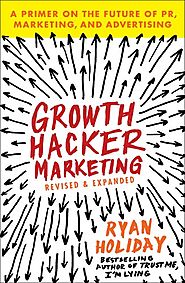
A Primer on the Future of PR, Marketing and Advertising
A new generation of megabrands like Facebook, Dropbox, Airbnb, and Twitter haven’t spent a dime on traditional marketing. No press releases, no TV commercials, no billboards. Instead, they rely on a new strategy—growth hacking—to reach many more people despite modest marketing budgets. Growth hackers have thrown out the old playbook and replaced it with tools that are testable, trackable, and scalable. They believe that products and businesses should be modified repeatedly until they’re primed to generate explosive reactions.
Bestselling author Ryan Holiday, the acclaimed marketing guru for American Apparel and many bestselling authors and multiplatinum musicians, explains the new rules and provides valuable examples and case studies for aspiring growth hackers. Whether you work for a tiny start-up or a Fortune 500 giant, if you’re responsible for building awareness and buzz for a product or service, this is your road map.
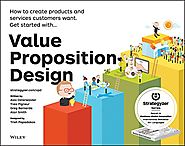
The authors of the international bestseller Business Model Generation explain how to create value propositions customers can’t resist; Value Proposition Design helps you tackle the core challenge of every business — creating compelling products and services customers want to buy. This highly practical book, paired with its online companion, will teach you the processes and tools you need to create products that sell.; Using the same stunning visual format as the authors’ global bestseller, Business Model Generation, this sequel explains how to use the “Value Proposition Canvas” to design, test, create, and manage products and services customers actually want.; Value Proposition Design is for anyone who has been frustrated by new product meetings based on hunches and intuitions; it’s for anyone who has watched an expensive new product launch fail in the market. The book will help you understand the patterns of great value propositions, get closer to customers, and avoid wasting time with ideas that won’t work. You’ll learn the simple process of designing and testing value propositions, that perfectly match customers’ needs and desires.; In addition the book gives you exclusive access to an online companion on Strategyzer.com. You will be able to assess your work, learn from peers, and download pdfs, checklists, and more.; Value Proposition Design is an essential companion to the ”Business Model Canvas” from Business Model Generation, a tool embraced globally by startups and large corporations such as MasterCard, 3M, Coca Cola, GE, Fujitsu, LEGO, Colgate-Palmolive, and many more.; Value Proposition Design gives you a proven methodology for success, with value propositions that sell, embedded in profitable business models."
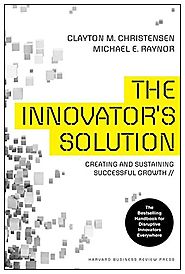
In his international bestseller The Innovator's Dilemma, Clayton M. Christensen exposed this crushing paradox behind the failure of many industry leaders: by placing too much focus on pleasing their most profitable customers, these firms actually paved the way for their own demise by ignoring the disruptive technologies that aggressively evolved to displace them. In The Innovator’s Solution, Christensen and coauthor Michael E. Raynor help all companies understand how to become disruptors themselves.
Clay Christensen (author of the award-winning Harvard Business Review article, “How Will You Measure Your Life?”) and Raynor not only reveal that innovation is more predictable than most managers have come to believe, they also provide helpful advice on the business decisions crucial to truly disruptive growth. Citing in-depth research and theories tested in hundreds of companies across many industries, the authors identify the processes that create successful innovation—and they show managers how to tailor their strategies to the changing circumstances of a dynamic world.
The Innovator’s Solution is an important addition to any innovation library.
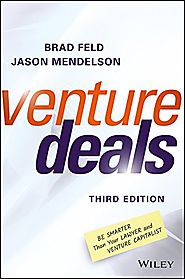
Get the inside scoop on what venture capitalists want to see in your startup as you hit the fundraising trail.; This is the highly anticipated third edition of the best-selling book which has become the definitive resource for understanding venture capital fundraising. Whether you are an entrepreneur, lawyer, student or just have an interest in the venture capital ecosystem, Venture Deals is for you. The book dives deeply into how deals are constructed, why certain terms matter (and others don’t), and more importantly, what motivates venture capitalists to propose certain outcomes.; You’ll see the process of negotiating from the eyes of two seasoned venture capitalists who have over 40 years of investing experience as VCs, LPs, angels, and founders. They will teach you how to develop a fundraising strategy that will be a win for all parties involved; This book is designed to bring transparency to the venture capital funding process and includes such topics as:; How to raise money;; What terms matter and which ones don’t;; How to negotiate a fair deal for everyone;; What makes venture capitalists tick, including how they are compensated and motivated;; How companies are valued by venture capitalists;; How all current structures of funding work, including convertible debt, crowdfunding, pre-sales and other non-traditional methods;; How these particular issues change through different stages of financing (seed, early, mid and late); and; How to avoid business and legal pitfalls that many entrepreneurs make; And as in the previous editions, this book isn’t just a one-sided opinion from venture capitalists, but also has helpful commentary throughout from a veteran CEO who has raised many rounds of financing from many different investors; If you are ready to learn all the secrets and ins and outs of fundraising, Venture Deals is an essential read
ONE OF AMAZON'S BEST BOOKS OF 2017
A look deep inside the new Silicon Valley, from the New York Times bestselling author of The Everything Store
Ten years ago, the idea of getting into a stranger's car, or a walking into a stranger's home, would have seemed bizarre and dangerous, but today it's as common as ordering a book online. Uber and Airbnb have ushered in a new era: redefining neighborhoods, challenging the way governments regulate business, and changing the way we travel.
In the spirit of iconic Silicon Valley renegades like Steve Jobs and Bill Gates, another generation of entrepreneurs is using technology to upend convention and disrupt entire industries. These are the upstarts, idiosyncratic founders with limitless drive and an abundance of self-confidence. Led by such visionaries as Travis Kalanick of Uber and Brian Chesky of Airbnb, they are rewriting the rules of business and often sidestepping serious ethical and legal obstacles in the process.
The Upstarts is the definitive story of two new titans of business and a dawning age of tenacity, conflict and wealth. In Brad Stone's riveting account of the most radical companies of the new Silicon Valley, we discover how it all happened and what it took to change the world.
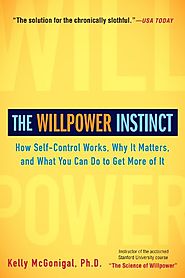
Based on Stanford University psychologist Kelly McGonigal's wildly popular course "The Science of Willpower," The Willpower Instinct is the first book to explain the new science of self-control and how it can be harnessed to improve our health, happiness, and productivity.; Informed by the latest research and combining cutting-edge insights from psychology, economics, neuroscience, and medicine, The Willpower Instinct explains exactly what willpower is, how it works, and why it matters. For example, readers will learn:; Willpower is a mind-body response, not a virtue.; It is a biological function that can be improved through mindfulness, exercise, nutrition, and sleep; Willpower is not an unlimited resource. Too much self-control can actually be bad for your health; Temptation and stress hijack the brain's systems of self-control, but the brain can be trained for greater willpower; Guilt and shame over your setbacks lead to giving in again, but self-forgiveness and self-compassion boost self-control; Giving up control is sometimes the only way to gain self-control; Willpower failures are contagious--you can catch the desire to overspend or overeat from your friends--but you can also catch self-control from the right role models; In the groundbreaking tradition of Getting Things Done, The Willpower Instinct combines life-changing prescriptive advice and complementary exercises to help readers with goals ranging from losing weight to more patient parenting, less procrastination, better health, and greater productivity at work.
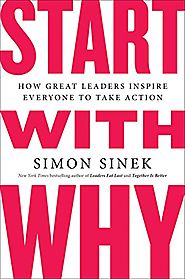
People don't buy what you do; they buy why you do it. And what you do simply proves what you believe
The inspiring, life-changing bestseller by the author of LEADERS EAT LAST and TOGETHER IS BETTER.; In 2009, Simon Sinek started a movement to help people become more inspired at work, and in turn inspire their colleagues and customers. Since then, millions have been touched by the power of his ideas, including more than 28 million who’ve watched his TED Talk based on START WITH WHY -- the third most popular TED video of all time.; Sinek starts with a fundamental question: Why are some people and organizations more innovative, more influential, and more profitable than others?; Why do some command greater loyalty from customers and employees alike? Even among the successful, why are so few able to repeat their success over and over?; People like Martin Luther King Jr., Steve Jobs, and the Wright Brothers had little in common, but they all started with WHY. They realized that people won't truly buy into a product, service, movement, or idea until they understand the WHY behind it.; START WITH WHY shows that the leaders who've had the greatest influence in the world all think, act, and communicate the same way -- and it's the opposite of what everyone else does. Sinek calls this powerful idea The Golden Circle, and it provides a framework upon which organizations can be built, movements can be led, and people can be inspired. And it all starts with WHY.
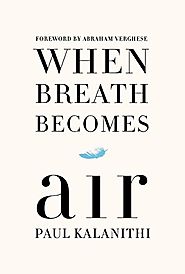
#1 NEW YORK TIMES BESTSELLER • PULITZER PRIZE FINALIST• For readers of Atul Gawande, Andrew Solomon, and Anne Lamott, this inspiring, exquisitely observed memoir finds hope and beauty in the face of insurmountable odds as an idealistic young neurosurgeon attempts to answer the question What makes a life worth living?
NAMED ONE OF THE BEST BOOKS OF THE YEAR BY
The New York Times Book Review • People • NPR • The Washington Post • Slate • Harper’s Bazaar • Esquire • Time Out New York • Publishers Weekly • BookPage
Finalist for the PEN Center USA Literary Award in Creative Nonfiction and the Books for a Better Life Award in Inspirational Memoir
At the age of thirty-six, on the verge of completing a decade’s worth of training as a neurosurgeon, Paul Kalanithi was diagnosed with stage IV lung cancer. One day he was a doctor treating the dying, and the next he was a patient struggling to live. And just like that, the future he and his wife had imagined evaporated. When Breath Becomes Air chronicles Kalanithi’s transformation from a naïve medical student “possessed,” as he wrote, “by the question of what, given that all organisms die, makes a virtuous and meaningful life” into a neurosurgeon at Stanford working in the brain, the most critical place for human identity, and finally into a patient and new father confronting his own mortality.
What makes life worth living in the face of death? What do you do when the future, no longer a ladder toward your goals in life, flattens out into a perpetual present? What does it mean to have a child, to nurture a new life as another fades away? These are some of the questions Kalanithi wrestles with in this profoundly moving, exquisitely observed memoir.
Paul Kalanithi died in March 2015, while working on this book, yet his words live on as a guide and a gift to us all. “I began to realize that coming face to face with my own mortality, in a sense, had changed nothing and everything,” he wrote. “Seven words from Samuel Beckett began to repeat in my head: ‘I can’t go on. I’ll go on.’” When Breath Becomes Air is an unforgettable, life-affirming reflection on the challenge of facing death and on the relationship between doctor and patient, from a brilliant writer who became both.
The latest groundbreaking tome from Tim Ferriss, the #1 New York Times best-selling author of The 4-Hour Workweek.; From the author:; “For the last two years, I’ve interviewed more than 200 world-class performers for my podcast, The Tim Ferriss Show. The guests range from super celebs (Jamie Foxx, Arnold Schwarzenegger, etc.) and athletes (icons of powerlifting, gymnastics, surfing, etc.) to legendary Special Operations commanders and black-market biochemists. For most of my guests, it’s the first time they’ve agreed to a two-to-three-hour interview.; This unusual depth has helped make The Tim Ferriss Show the first business/interview podcast to pass 100 million downloads.; “This book contains the distilled tools, tactics, and ‘inside baseball’ you won’t find anywhere else. It also includes new tips from past guests, and life lessons from new ‘guests’ you haven’t met.; “What makes the show different is a relentless focus on actionable details. This is reflected in the questions. For example: What do these people do in the first sixty minutes of each morning? What do their workout routines look like, and why? What books have they gifted most to other people? What are the biggest wastes of time for novices in their field? What supplements do they take on a daily basis?; “I don’t view myself as an interviewer. I view myself as an experimenter. If I can’t test something and replicate results in the messy reality of everyday life, I’m not interested.; “Everything within these pages has been vetted, explored, and applied to my own life in some fashion. I’ve used dozens of the tactics and philosophies in high-stakes negotiations, high-risk environments, or large business dealings. The lessons have made me millions of dollars and saved me years of wasted effort and frustration.; “I created this book, my ultimate notebook of high-leverage tools, for myself. It’s changed my life, and I hope the same for you.”
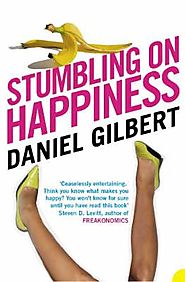
In this fascinating and often hilarious work - winner of the Royal Society of Science Prize 2007 - pre-eminent psychologist Daniel Gilbert shows how - and why - the majority of us have no idea how to make ourselves happy.
We all want to be happy, but do we know how? When it comes to improving tomorrow at the expense of today, we're terrible at predicting how to please our future selves.
In `Stumbling on Happiness' Professor Daniel Gilbert combines psychology, neuroscience, economics and philosophy with irrepressible wit to describe how the human brain imagines its future - and how well (or badly) it predicts what it will enjoy. Revealing some of the amazing secrets of human motivation, he also answers thought-provoking questions - why do dining companions order different meals instead of getting what they want? Why are shoppers happier when they can't get refunds? And why are couples less satisfied after having children while insisting that their kids are a source of joy?
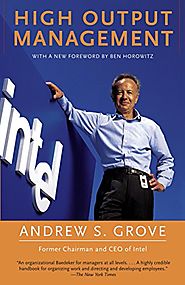
The essential skill of creating and maintaining new businesses—the art of the entrepreneur—can be summed up in a single word: managing. In High Output Management, Andrew S. Grove, former chairman and CEO (and employee number three) of Intel, shares his perspective on how to build and run a company. Born of Grove’s experiences at one of America’s leading technology companies, this legendary management book is a Silicon Valley staple, equally appropriate for sales managers, accountants, consultants, and teachers, as well as CEOs and startup founders. Grove covers techniques for creating highly productive teams, demonstrating methods of motivation that lead to peak performance—throughout, High Output Management is a practical handbook for navigating real-life business scenarios and a powerful management manifesto with the ability to revolutionize the way we work.
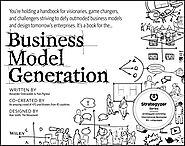
Business Model Generation is a handbook for visionaries, game changers, and challengers striving to defy outmoded business models and design tomorrow's enterprises. If your organization needs to adapt to harsh new realities, but you don't yet have a strategy that will get you out in front of your competitors, you need Business Model Generation. Co-created by 470 "Business Model Canvas" practitioners from 45 countries, the book features a beautiful, highly visual, 4-color design that takes powerful strategic ideas and tools, and makes them easy to implement in your organization.; It explains the most common Business Model patterns, based on concepts from leading business thinkers, and helps you reinterpret them for your own context. You will learn how to systematically understand, design, and implement a game-changing business model--or analyze and renovate an old one. Along the way, you'll understand at a much deeper level your customers, distribution channels, partners, revenue streams, costs, and your core value proposition. Business Model Generation features practical innovation techniques used today by leading consultants and companies worldwide, including 3M, Ericsson, Capgemini, Deloitte, and others. Designed for doers, it is for those ready to abandon outmoded thinking and embrace new models of value creation: for executives, consultants, entrepreneurs, and leaders of all organizations. If you're ready to change the rules, you belong to "the business model generation!"
